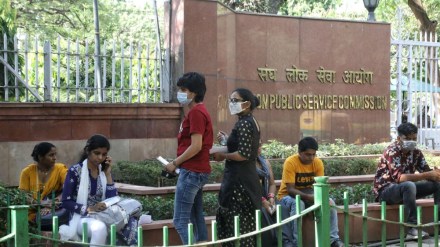The Centre’s hurried decision to cancel the advertisement for filling some posts through lateral entry shows the government’s weak-kneed approach to a sensible move. The U-turn was triggered by a political storm created by the Opposition and two of the Bharatiya Janata Party’s own allies who questioned it on the ground that no posts are being reserved for the Scheduled Castes and Scheduled Tribes. In a letter to Union Public Service Commission chairperson Preeti Sudan, the Centre has said that the Prime Minister believed that the constitutional mandate has to be respected to ensure rightful representation of the marginalised communities.
This doesn’t hold water as the fact of the matter is that the number of appointments sought to be made is a paltry 45. In the past five years, 63 appointments have been made through this route and currently, 57 entrants occupy positions in various ministries/departments. Typically, lateral entrants are hired on contracts lasting three to five years, with extensions based on performance and government needs. The idea is to infuse fresh talent into the bureaucracy by getting domain experts who possess the knowledge to enhance the availability of specialised skills essential for tackling the new-age complex governance and policy challenges.
Going by the above, the Opposition’s stance of having reservations in lateral hiring is entirely misplaced. And the Leader of Opposition Rahul Gandhi’s attempt to link it to the appointment of the Securities and Exchange Board of India (Sebi) chairperson Madhabi Puri Buch as the first chairperson hired through the lateral entry route is even more laughable. To take Sebi as an example, Buch is not the first chairperson to face allegations. Even officers from the Indian Administrative Service (IAS) have not had it easy. For example, many of her predecessors faced allegations over the way they handled crucial cases and the charges included alleged conflict of interest.
The Opposition’s argument falls flat on historical evidence, too. India’s first Prime Minister Jawaharlal Nehru started the Industrial Management Pool in 1959, which saw lateral entrants like economist and former Reserve Bank of India Governor IG Patel and V Krishnamurthy (who led BHEL and SAIL). In 1977, the Janata Dal decided to bring in professionals/technocrats in government as secretaries for the first time. The entry of technocrats like Bimal Jalan, Vijay Kelkar, Rakesh Mohan, and Montek Singh Ahluwalia in the 1980s led to widespread changes in the fiscal policy, tariff regime, dismantling of licence raj, and end of the administered price regime. Manmohan Singh, Raghuram Rajan, and Nandan Nilekani have been some of the notable additions to this long list.
The government must keep pushing for lateral hiring as it will bring in much-needed outside experience, buffer the talent within the administration, and challenge the IAS officers into continuous self-improvement, The fact is that the IAS has been designed for the pre-reform India of a dominant state. The logic of economic reforms that began in 1991 is for the state to yield space to the market. But as we deepen reforms, it becomes even more imperative for the government to understand the impact of its policies on stakeholders — the private sector, the non-government sector, and the larger public. Throwing the baby out with the bathwater is a short-sighted move. Some bold thinking was necessary; it’s sad that the government surrendered meekly, probably because of the ensuing Assembly elections.
